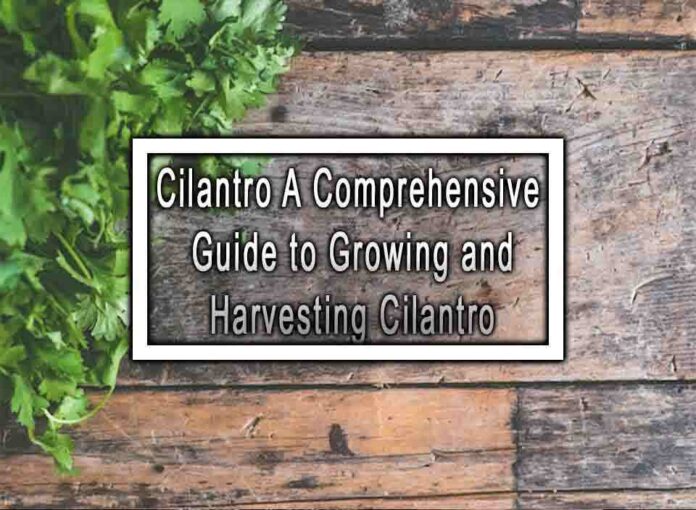Cilantro, also known as coriander or Chinese parsley, is a versatile herb commonly used in various cuisines around the world. It’s known for its distinct flavor and aroma. Here’s a comprehensive guide to growing and harvesting cilantro:
1. Choose the Right Variety:
- There are different varieties of cilantro, each with slightly varying flavors and growth habits. Choose a variety that suits your taste preferences and local growing conditions.
2. Planting Time:
- Cilantro prefers cool weather and can be grown in both spring and fall. It’s best to avoid planting during the hottest part of the summer, as cilantro tends to bolt (go to seed) quickly in high temperatures.

3. Soil Preparation:
- Cilantro grows well in well-draining, fertile soil with a pH level of around 6.2 to 6.8. Prepare the soil by adding compost or well-rotted organic matter.
4. Sunlight:
- Cilantro prefers partial shade in warmer climates but can tolerate full sun in cooler regions. It’s important to provide some protection from the intense afternoon sun.
5. Planting Seeds:
- Directly sow cilantro seeds in the garden bed at a depth of about 1/4 inch to 1/2 inch. Space the seeds about 2 inches apart.
6. Watering:
- Keep the soil consistently moist, especially during the germination period. Once established, cilantro can tolerate slightly drier conditions.
7. Thinning:
- When the cilantro seedlings have grown a few inches tall, thin them to allow proper air circulation and prevent overcrowding. You can eat the thinned seedlings as microgreens.
8. Fertilization:
- Cilantro doesn’t require heavy fertilization. A balanced fertilizer applied during planting and occasional side dressing with compost can provide the necessary nutrients.
9. Preventing Bolting:
- Cilantro tends to bolt quickly in warm weather. To delay bolting, keep the plants well-watered, provide some shade, and consider planting in successive batches for a continuous harvest.
By following these steps, you can successfully grow and harvest cilantro in your garden. Its fresh and aromatic leaves can add a burst of flavor to a wide range of dishes, from salads and salsas to curries and soups.









